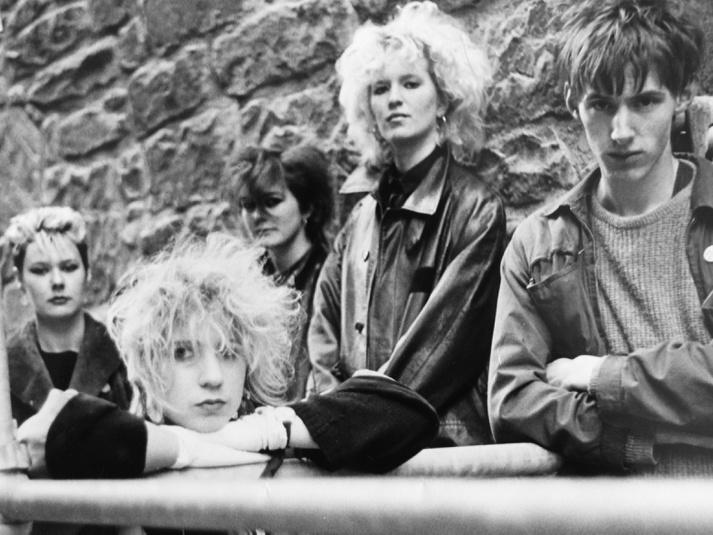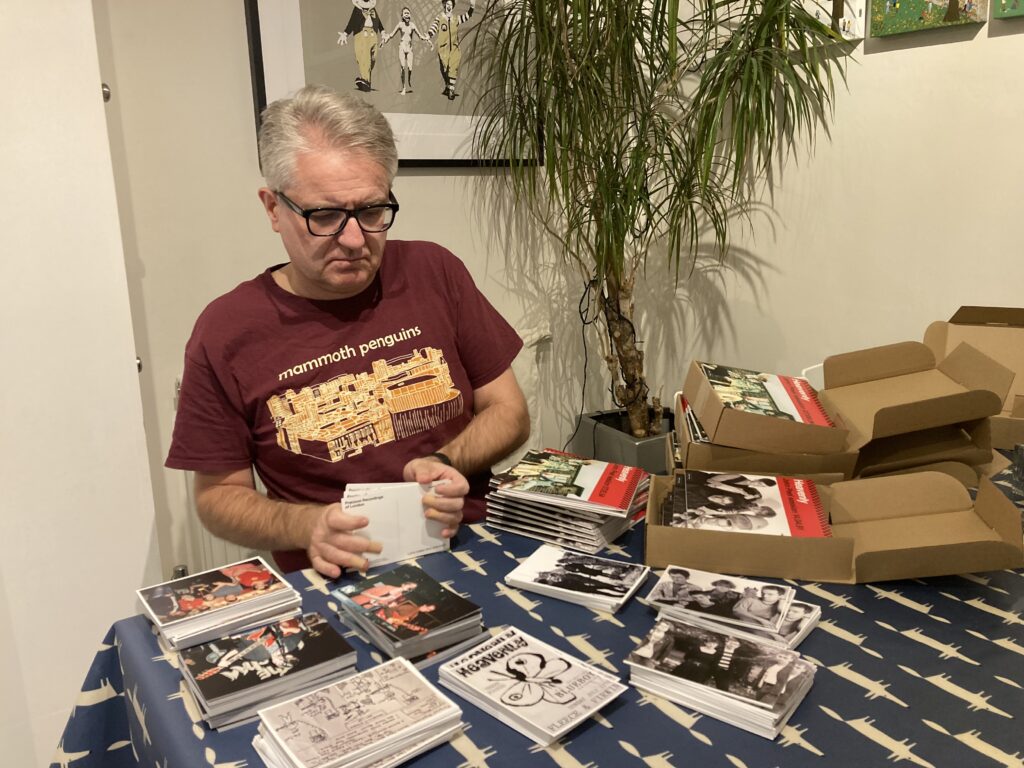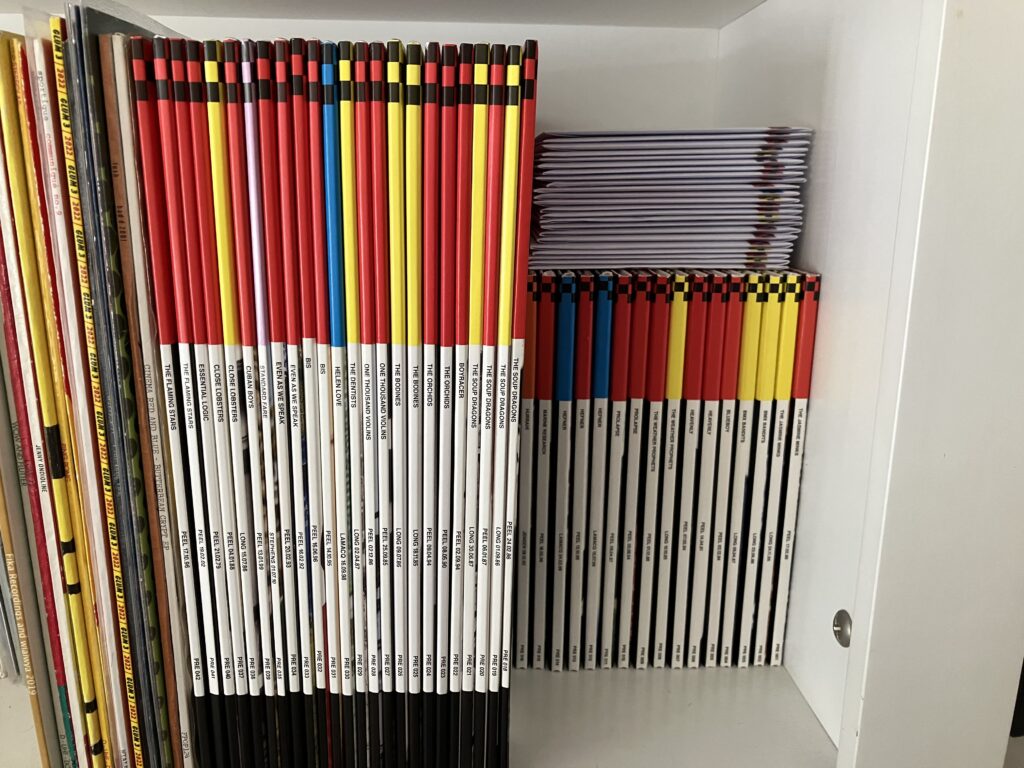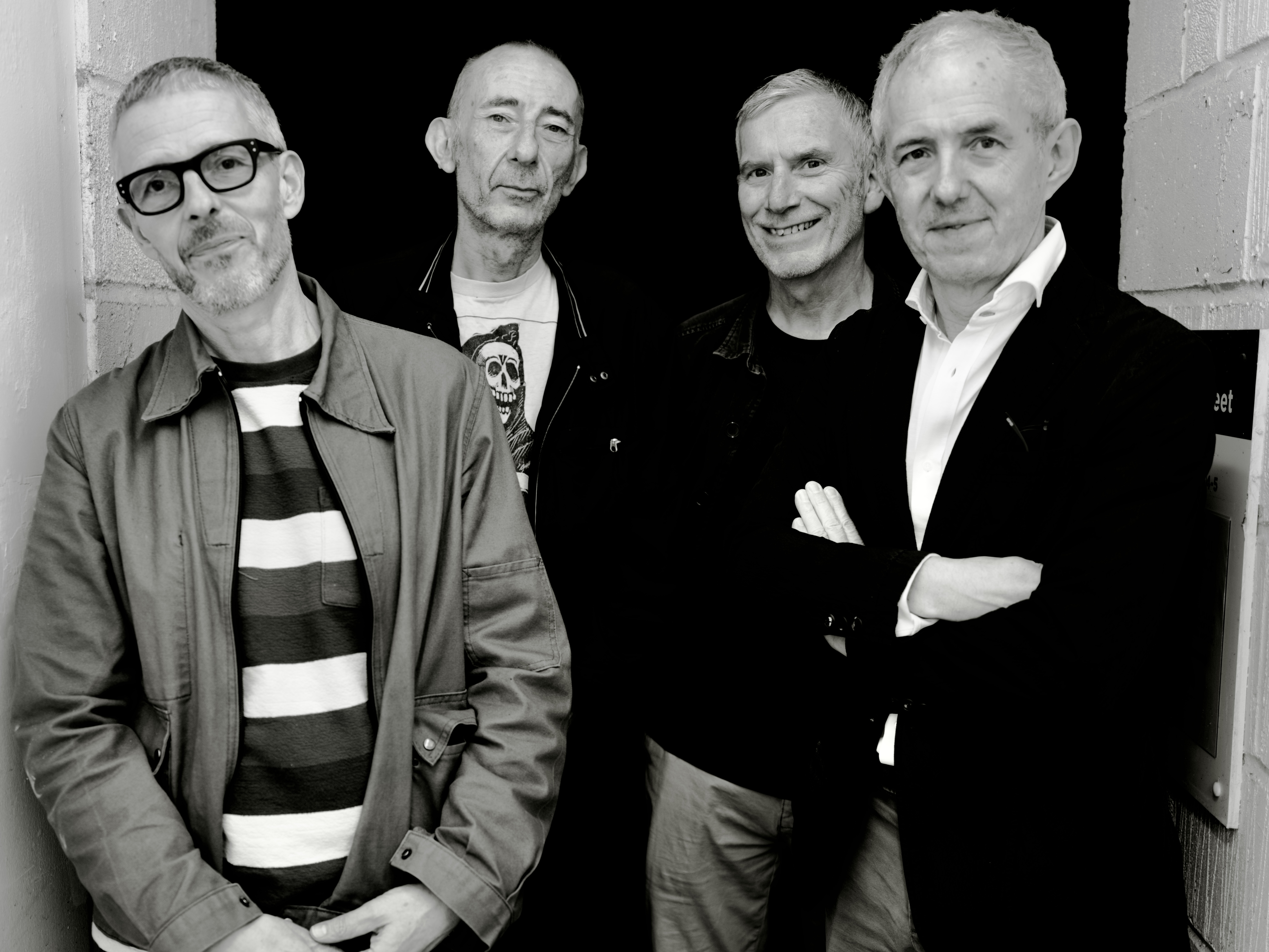Horse racing journalist and indie-pop lifer Nick Godfrey invites us to survey his vinyl-only reissue empire
After years spent writing up the safest bets as a horse racing journalist, Nick Godfrey decided, with the help of a small inheritance, to gamble everything by setting up a label wholly preoccupied with releasing his favourite thing in life: classic indie-pop live sessions performed for the likes of Janice Long, John Peel and Steve Lamacq.
Precious Recordings of London is – like any serious label, reissue or otherwise – an all-consuming labour of love that displays Nick’s passion for the jangliest of all genres like a pin badge on his lapel. Still fully immersed in a scene he grew up with, Nick has also collaborated with modern-day indie-pop behemoths wiaiwya on a zine and is giving some of the era’s original protagonists, and their offspring, a fresh lease of life by releasing brand-new music.
With Precious Recordings’ recent release Saloon: Peel Sessions 21.08.01-16.04.03 a big favourite here at Groovy Times Towers, we decided to catch-up with the Dexys-obsessed label boss to find out more about his diamond in the rough.
Were you an active participant in the original C86 indie-pop scene so much of the music you’re putting out is either from or inspired by?
I was 18 in 1986, living in Sussex, and I went to about 100 gigs in the 12 months before the NME released their infamous C86 tape. It was a small, close-knit scene. I used to see the same faces in London and Brighton at places like Room at the Top and the Big Twang, and many of them continue to have a lifelong involvement in music. I was co-author of a one-issue fanzine featuring my favourite artists – people like the June Brides, the Shop Assistants (below), Primal Scream, McCarthy. After that era, I didn’t have any role in the scene beyond dancing a lot.

Most of the BBC sessions you release were recorded during the heyday of Peel and Lamacq. Are they all sessions you remember hearing at the time?
I do remember hearing most of them – in fact, one of the catalysts for Precious was finding my old box of tapes that hadn’t been played for years. So yes, there is that sense of excitement and memory. Plus it’s nice to hear proper versions, rather than dodgy ones taped off the wireless.
Are you working through a list of sessions? Do you circle the ones you’re desperate to release?
Ken Garner, take a bow. His books on live sessions really do have scriptural status as far as I’m concerned. These are exhaustive, comprehensive volumes. In Session Tonight: The Complete Radio 1 Recordings lists everything up to 1993. The Peel Sessions does the same for Peel’s entire career. I couldn’t do without them – even the BBC will often direct me to Ken’s work. It’s quite hard to find the details you need after 2007, though. I do wish Ken would come up with another book. As for circling? Not literally, but I do have a massive list.
“Creation is the only label I’ve ever actively collected – their releases were prefixed CRE, and Precious is PRE”
What’s the process for releasing a BBC session? Is it ever such a faff that you want to call it quits?
No way. But I’d be lying if I said there weren’t any frustrations. The small team at the BBC licensing department are incredibly helpful and lovely, but they’re overworked and it can take a while. You need to get permissions and I always make sure the artists are involved, probably more so than they want to be! But the biggest frustration – and a danger to the label’s wellbeing – are secondary licences. I do everything by the book, paying upfront for mechanical royalties and the BBC’s own licence for the recordings – as well as manufacturing costs, of course – but sometimes you have to pay another licence to a record label if the band was signed at the time. It can be a tedious process – and ludicrously expensive. You’re paying simply for the right to release the sessions, as they don’t own the recordings and have to do literally nothing. So on a short run of 500 or fewer, I can’t break even – even if we sell out. I’m not sure this money always gets to the artists. That is frustrating.

You started out releasing on seven-inch, the classic indie format; did it pain you to move to the unfashionable ten-inch, or is that even more indie somehow?
I started with seven-inch gatefolds. I wanted them to look like books, with the sleeve essay inside and lots of images, and that format also meant there wasn’t really an A-side or B-side. They were four session tracks, all of equal validity. But when manufacturing costs went up by 60-plus percent during Covid, I couldn’t maintain a format that has to be the most expensive you could pick. I was reluctant to move to tens, but I must admit I love them now. I wish I’d started with them, so they’re all the same; doubtless you’ll have noticed the design is uniform, albeit colour-coded via DJ: red for Peel, yellow for Janice Long, blue for Lamacq. Mind you, I’ve since learned that the ten-inch isn’t exactly financially sensible either, as they’re the same price as albums! So we’re now doing a few albums as well, plus returning to the seven-inch format for the PRENEW series of new recordings with those two singles by Blueboy, One and Deux, and Dr. Clarke, the first new Loft single for decades.
“Horse racing and pop music do tend to attract those of an obsessive nature – the sort of people who always think context makes something more interesting and worthwhile”
Why do you think this particular strand of indie pop – Heavenly, the Loft, Hefner, Saloon – endures? And why is it so magic to you?
I don’t know. It just is. I guess I always liked a certain strand of pop music – the Jam, Dexys, Altered Images, the Smiths, Orange Juice. I’m sure everybody knows the score. I also always loved 1960s pop – Love, the Byrds, the Kinks, the Small Faces. So I guess it’s song-based. Plus I’m as big a fan of the Velvets and the Mary Chain as anybody else. But C86 onwards is what I know best, and the indie pop you mention clearly derives from that scene. There’s just this real sense of community in it, like at Glas-Goes Pop, surely the most welcoming festival on the planet. And if the songs don’t always explicitly reference the subject, people involved in this indie-pop genre are seldom miles apart in terms of a political, social and cultural worldview. That said, I do like other genres, punk and post-punk being the obvious examples. And while I never would have believed I’d get to 50 releases, I’m planning to branch out a little more. Trouble is, there are still a multitude of artists, either within or adjacent to the genre we’re talking about, who have sessions just aching to see the light of day.

Were you inspired by the Strange Fruit label?
I always describe Precious as a low-rent Strange Fruit, but in reality, I think our releases look nicer and are more lovingly created. The Precious world is more colourful. The thing is, you can hear these sessions for nothing online a lot of the time, so I wanted these releases to be special, something a fan like myself would have to buy. Or what’s the point? As for influential labels: Creation is the only label I’ve ever actively collected. Their releases were prefixed CRE, and Precious is PRE. I always joke with Jim Shepherd of the Jasmine Minks that while they were only CRE 004, they will always be PRE 001. If Jim and Duglas from the BMX Bandits hadn’t been keen on the idea, Precious wouldn’t exist. They were the first four releases. Otherwise: Immediate, Factory, 2 Tone, Sarah, Fortuna Pop! and wiaiwya. All labels with a distinct identity that cared about their releases.
The label’s name is inspired by Dexys Midnight Runners’ Let’s Make This Precious; is that the band you’d most like to release?
I’d love to release a session version of Let’s Make This Precious, for sure. There are two – one for Richard Skinner, and one for David ‘Kid’ Jensen. But there’s major label involvement, and anyway, they’ve been released before.
Any other holy grails?
Too many to list! Primal Scream’s first three sessions were the motherlode, but they were released last year by Young Tiki. So let’s say the Field Mice’s sole session for Peel, with four songs never released elsewhere. It’s never going to happen – Bobby Wratten is too principled for his own good! I have asked, and I do respect his decision. In short, he sees them as a session, and nothing else, and doesn’t want a vinyl version. There are bootlegs, annoyingly. Otherwise, the Style Council plus a rare Jam session, or the first Jesus and Mary Chain session for Peel. For personal reasons, I’d love the Shop Assistants on the label. The Pastels, the Wake, Altered Images, Strawberry Switchblade, Huggy Bear, Bikini Kill. This list could run and run.

What’s in the pipeline?
We ended 2024 with those new singles from The Loft (above) and Blueboy, plus a 1986 session from Edinburgh’s garage-punk psych legends the Green Telescope. The latter was broadcast by Andy Kershaw – his debut on Precious. This year starts with the Chesterfields’ Janice Long session, two sessions from the brilliant Shrag and an LP from Big Flame. That last one will be big news for their fans, as there’s been nothing for nearly four decades. We’ve also got a session from the Vultures, who only ever released one single, a live Peel outing for Saloon, and albums from the Primevals, ATV and the Loves. I’m very excited about an album by the Twinsets, stars of the wonderful documentary Since Yesterday. There’s probably something else I’ve forgotten. I often make a vow not to ‘sign’ any more artists, and then break it within a few hours when somebody emails me or I think of someone who clearly fits the Precious bill.
Are there any skills from your career as a horse racing journalist that are also applicable to running an indie-pop label?
I suppose my editing skills are useful for proofreading the sleeve essays, though Amelia Fletcher might disagree: she noticed we had “HEAVNELY” on the spine of their sessions records, PRE 006 and PRE 007. I’m OK as a writer, but I’m a half-decent editor, and I’ve always done a lot of organising when it comes to people more talented than me. While I’ve never been the most pushy of journalists, I like to think people have always trusted me. I think that’s a more important skill, and maybe translates to dealing with artists? Incidentally, there is one thing I’ve noticed. Horse racing and pop music do tend to attract those of an obsessive nature – the sort of people who always think context makes something more interesting and worthwhile. Anoraks only need apply!
Given the obvious toil required, why do you keep doing this?
My email sign-off comes from Belle & Sebastian: “Do something pretty while you can.” So I am. All that, and I never even mentioned Felt! [We can fix that for you – Groovy Times.]
Get all your Precious Recordings of London goodies from Bandcamp.